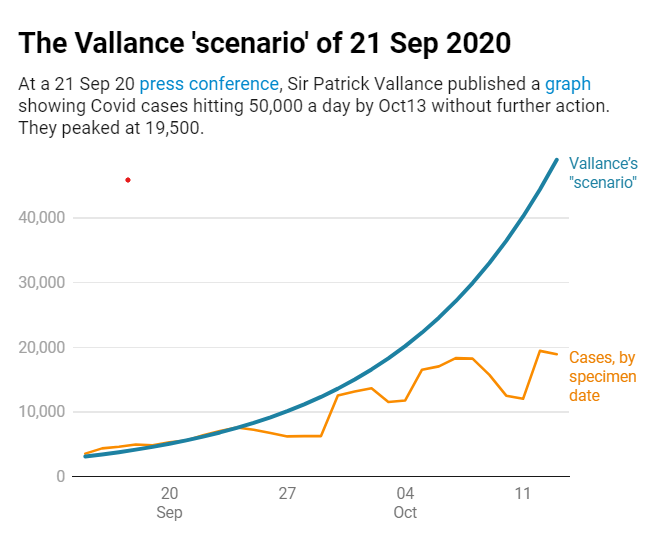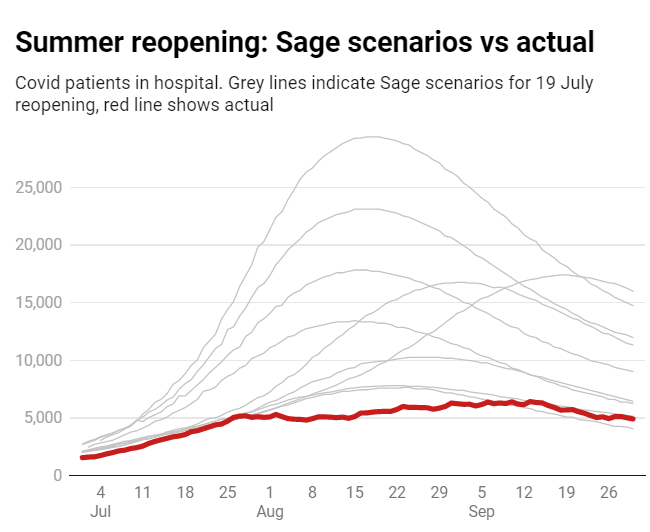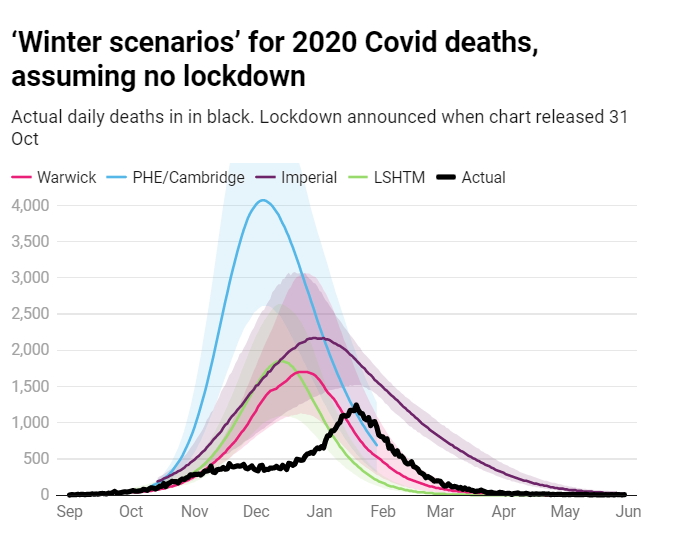21 July 2022
Lies, Damned Lies and Coronavirus
This is the end
by David Chilvers

In January 1967, the first Doors album was released including the track “This is the end”. Unfortunately, four and a half years later that was the case for Jim Morrison, who wrote the lyrics to the song. Although not quite that time period, I feel that these articles on COVID-19 statistics have reach the end; it is hard to find new stories to tell and other news items have much greater importance. We have to “live with COVID” as the Government suggests although an article in the Health Service Journal today suggests that the NHS does not accept this conclusion. We will come back to that later, but I want to include in this article the key things that I have learned from the past two-and a-bit years.
The first conclusion is that legal lockdowns do not work. The first lockdown in the UK was probably necessary as we were dealing with the unknown; but in subsequent lockdowns – the tiered system and the 2nd and 3rd national lockdowns, reductions in the number of cases preceded the lockdown. We demonstrated this in November and December 2020, and the reason that infections start to fall before the lockdowns are implemented is probably due to consumers modifying their behaviour when given alarming data on increasing case numbers. So, a legal lockdown is probably unnecessary and brings with it a large amount of collateral damage which we are still learning about. The damage includes:
- Disruption to children’s education with a widening of the gap between rich and poor (the complete opposite of the Government’s Levelling Up agenda)
- Postponement of both diagnosis and treatment of other diseases, leading to earlier deaths than would otherwise be the case (excess deaths in England and Wales in the last three months are 13,284 compared to 6,352 COVID deaths)
- Increases in mental health problems, with some individuals finding it hard to reconnect with society after a long period of isolation
- The economic damage caused by printing money to fund the Furlough Programme (the last time the money supply increased substantially, in the 1970’s, high inflation followed, a scenario we are now seeing)
The Great Barrington Declaration, which encouraged focussed protection on the vulnerable and less isolation for the rest of the population, was pilloried at the time, but now seems to have been a sensible plan. At the other extreme, COVID zero strategies practised by Australia, China and New Zealand, have been seen as long-term failures after initial apparent success.
The second thing I have learned from the past two years is that an innovative approach to vaccine development and procurement has clearly worked, in reducing the severity of disease and subsequent mortality. We highlighted the positive impact of the vaccination programme in March and July 2021; this was one (of the few!) areas that the Johnson administration had right. The strategy to procure large doses of (at the time) vaccines with unknown efficacy was a masterstroke and led to the UK being in the vanguard of vaccine rollout and able to inoculate large numbers of individuals very quickly.
The third thing I have learned, as a mathematical modeller, is that the models used to guide the politicians were not really fit for purpose. Mathematical models can help organisations decide on appropriate courses of action but they have to be based upon good data and defensible assumptions. When the models do not work, the good scientist re-evaluates them in the light of new information and updates the model. This leads to a virtuous feedback loop in which the models are continually refined and improved.
The models used by SAGE appear to have shortcomings in the assumptions used, for example regarding natural and acquired immunity and in the speed of transmission of disease. Virtually all the model scenarios overstated the ultimate outcome by very large factors, even optimistic assumptions leading to forecasts that were higher than what actually happened. The latest Munro report comes to exactly the same conclusion.
The notorious forecast shown by Patrick Vallance at the COVID press conference on 21st September 2020 was probably the worst example:

However, there were many other examples of pessimistic forecasts made by the groups advising (and part of) SAGE. Here are two others (all charts courtesy of the Spectator data dashboard)


Both these forecasts, or scenarios as the modellers prefer to call them (to escape retribution) are wrong to a massive degree. In any private company these modellers would have been fired some time ago, and we must hope that the COVID-10 Public Inquiry highlights the need for better input to such decisions in future based upon a much wider spread of expertise. Variance in forecasts is essentially a good thing as it forces all parties to re-examine their data and assumptions (which as noted any good modeller should be doing all the time anyway).
The final thing I have learned, contrary to my prior expectations, is that as a country we spend an increasing amount on health and the total is near the top of the level spent by most developed nations. In return for this increased spending, we see returns on investment in terms of outcomes which are near the bottom end of those countries. The staff in the NHS do a fantastic job as I’ve learned from working with a number of them recently, but to spend increasing amounts of money without any material improvement in outcomes raises fundamental questions about management. As with the modellers, any senior management team producing deteriorating performance from increased funding would be looking for a new job. There are factors over which they have no control – an ageing population and costly new technology – but these factors apply to other developed nations that do not have the same problems.
The HSJ article referred to above concludes that “The NHS is not living with covid, it’s dying from it” but my view would be that the problems the NHS faces precede COVID and if it is dying it is from other causes. In fact, a bit like the patient brought into hospital with a heart attack, who then tests positive and sadly does not survive the heart attack and counts as a COVID death.
If you have read these articles, I hope you have enjoyed them and more importantly I hope they have made you think differently from the stories seen in the mainstream media. Going back to that Doors album, the penultimate track is “Take it as it comes” and I would urge you to not do that and be constructively critical about what you see and hear.

